#matthias corvinus
Text

King Matthias and the Czech Champion, Holubar
by Gyula Benczúr
#king#matthias#holubar#jousting#art#knights#knight#joust#jousting tournament#tournament#medieval#middle ages#europe#european#history#gyula benczúr#hungary#czech#bohemia#matthias corvinus#hungarian#armour#central europe
81 notes
·
View notes
Text
ROUND 1B, MATCH 7
***
WHAT MY PROFESSOR OF MEDIEVAL HISTORY SAID ABOUT THEM

III.Béla (Belo III.)
1172-1196
made a peace deal with the Byzantine Empire, which isn't surprising considering he seemed to be awfully fond of the Byzantines, the Byzantine emperor even wanted him to make him his successor, untill his son was born
instituted "credible locations" - don't know how exactly to translate that into English, basically monasteries and other church institutions that had the right to issue (as in, physically write out) charters, which in the Middle Ages, where there weren't that many ways to authenticate legal documents, was a big honking deal, and if you ever studied medieval history of Hungary, you must've heard about them - A LOT
also founded the royal chancellory, which was the most important administrative organ in medieval Hungary
on the other hand, he not only sired II.András, which would be bad enough on its own, but he also wanted to conquer Galicia and make András its king, an endeavour which ultimately failed
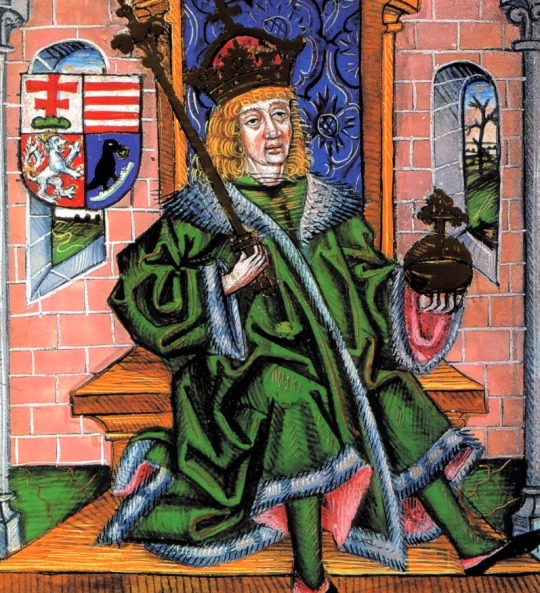
I.Mátyás (Matej I.); also known as Hunyadi Mátyás (Matej Korvín)
1458-1490
I mean, do I even have to say anything??? you know who this guy is right.
fought the Ottomans. supported arts and sciences. instituted important reforms. founded Academia Istropolitana. made Buda the capital and built the Buda Castle. gained the crown of Bohemia and stole territory from Austria. the man. the myth. the legend.
seriously he's going to win this round and it's not even going to be even close. sorry Béla.
31 notes
·
View notes
Photo

Countries ruled by Matthias I Corvinus, 1490.
by dodi_maps
145 notes
·
View notes
Photo



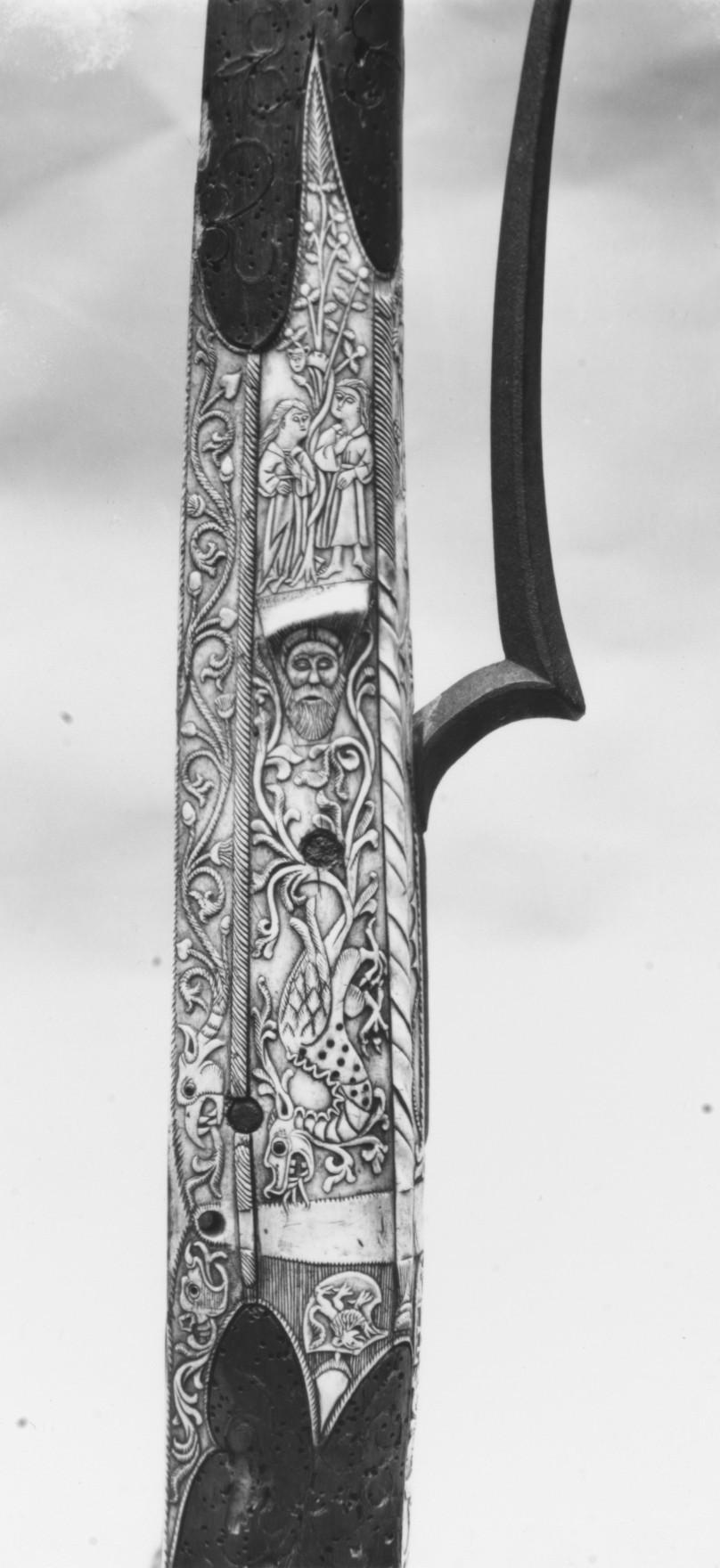

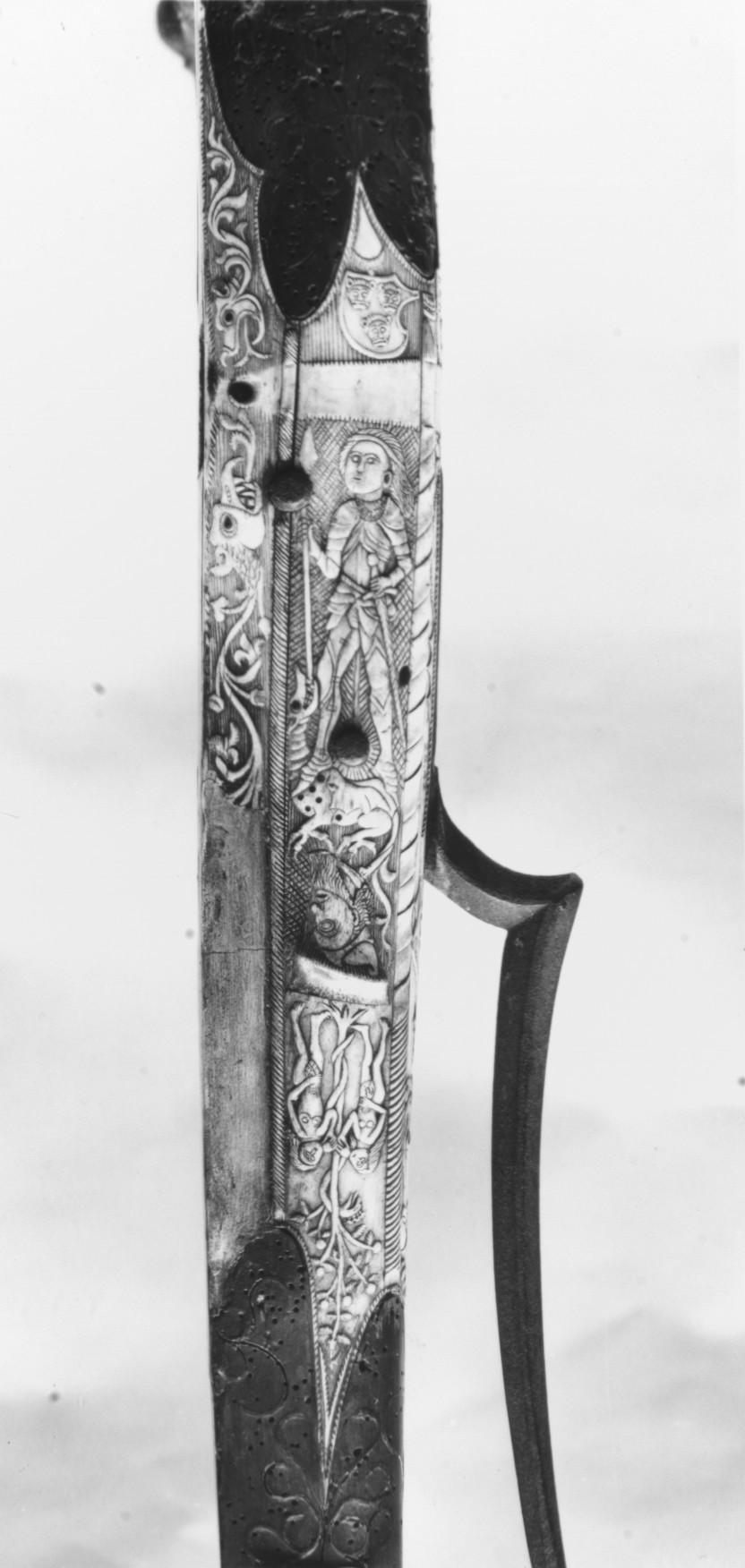
Crossbow of Matthias Corvinus, King of Hungary (reigned 1458–1490).
Medium: Wood, horn, animal sinew, staghorn, birch bark, iron alloy
Measurements: L. 29 in. (73.7 cm); W. 24 in. (60.9 cm); Wt. 5 lb. 1/2 oz. (2284 g)
Repository: The Metropolitan Museum of Art
via JSTOR
43 notes
·
View notes
Text
Alright. Let's Talk Matthias Corvinus
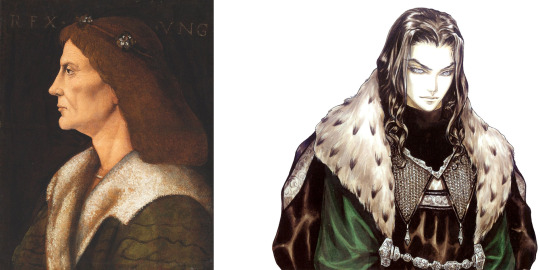
Okay. As the good guy now finally showed up in The lesser Evil, let's talk about Matthias Corvinus, because he is so weirdly important to Castlevania Lore, while also being completely ignored by it.
See, it is agreed upon that in quite a few ways Mathias Cronqvist, aka Dracula before he became Dracula, was based around Matthias Corvinus, who was King of Hungary between 1458 and 1490. Though very few aspects of Corvinus stayed when the character was written into Lament of Innocence outside of the name and some similarities in design, as well as a (claimed) fascination with the occult. Other than that, of course, Mathias in Lament of Innocence was mostly based on the depiction of Vlad Tepes Draculae from the 1992 Dracula movie by Coppola.
But, let's turn towards the historical character of Corvinus. Now, I will flat out state: Yes, I took some bits and pieces of what we know about him and basically designed an original character around it. But as I started to write the story, I looked a lot into who was ruling what bit of land and how were politicsgoing in Europe at the time. Now, we already do know that the history in the Castlevania Lore will differ in two ways: For one, the King of Wallachia is definitely dead and there is no successor (we see that in season 4), and, two, said King was very probably not Vlad Tepes Draculae, as I do assume there are no two Vlad Tepes running around at the same time. 😅 We can, however, assume that Corvinus still is the King of Hungary, which had a direct border to Wallachia at the time. Historically speaking, Vlad Tepes and Matthias Corvinus were uneasy allies in the fight against the Ottomans, which was going on at the time in question (though technically speaking it went on for a long long time after). But, also, Corvinus was having a war with Bavaria-Austria at the time over some parts of Austria and Bohemia, which Corvinus claimed should be part of Austro-Hungary. The entire issue about the Austro-Hungarian Realm is another thing, that stretches through history and brought a lot of conflct over the centuries.
In this case specifically, it just had happened, that there had been revolts against the clergy and the power of the Holy Roman Empire in Bohemia and even though it was revolts, it turned out that it was hard to quell based on the fact that the revolting folks had literally outgunned everyone else. They had guns, everyone else did not. And they knew how to tactically use them, too. So Austria and the HRE were struggling to suppress the revolts and asked Hungary for help. Hungary basically said: "Fine, but we gonna talk about those pieces of land that should be Hungarian." And yes, they suppressed the revolt, but in the end Hungary did not get that land, hence they had a war. And yes, Hungary went for two-front-war (against Austria and against the Ottomans), because Hungary had something nobody else had: A standing army of professional soldiers, compared to the other armies, that were mostly armed peasants.
Now, of course, those conflicts have probably changed through what has happened within the series. Namely: The entire Ottoman-Wallachia-Hungary conflict was very probably broken up, given that the night creatures did not give a flying fuck about who they killed and I do assume that both the Ottomans and the Hungarians withdrew from Wallachia, to try and secure their own lands against the night hordes. And while we do not know how far Dracula's armies did get, we do know that they at least made it to Austria, based on Carmilla's words at the beginning of season 3. Which also makes me think, that the Hungarian Black Army did loose at least some of their 19 000 men to the night hordes. Which might lead to them trying to find a way to fill up their ranks again.
Which is where the claims (that are not quite proven historically) about Matthias Corvinus being fascinated by the occult come into play. I decided to just run with it and have him hence be quite open to Bluebeard coming in and offering him a magic army. Especially as Dracula has now established the might such an army might have. So, yes, our dear king is playing with forces he does not quite understand. But I guarantee you, he will be an important character in this. 😊

This is how he looks in Lesser Evil :)
#castlevania#castlevania fanfiction#castlevania netflix#matthias corvinus#mathias cronqvist#vlad dracula tepes#slavic history#european history#15th century#the lesser evil
39 notes
·
View notes
Photo


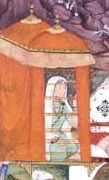




Royal Birthdays for today, February 23rd:
Louis IX, Duke of Bavaria , 1417
Matthias Corvinus, King of Hungary and Croatia, 1443
Salima Sultan Begum, Mughal Empress, 1539
Octavius, British Prince, 1779
Alexandrine of Prussia, Grand Duchess of Mecklenburg-Schwerin, 1803
Naruhito, Emperor of Japan, 1960
Estelle, Duchess of Östergötland, 2012
#princess Estelle#emperor naruhito#prince octavius#Alexandrine of Prussia#Salima Sultan Begum#Matthias Corvinus#louis ix#royal birthdays#long live the queue
21 notes
·
View notes
Note
Going off that last Dracula ask, do you have any reading material suggestions for anyone who might want to find more historically accurate info about Vlad Tepes and even the love affair details b/w Radu and Mehmed II? To get a better idea also of Matthias's role in Vlad's lifetime?
The easiest place for an English-speaking layperson to start is probably with Marcus Tanner's The Raven King: Matthias Corvinus and the Fate of His Lost Library (Yale University Press, 2001). It's part biography, part travelogue, and part history, and it covers the figure of Matthias himself and his legendary lost library pretty well. If you ignore Tanner's weird Male Historian misogyny toward Matthias's wives and failure to transcribe Hungarian names correctly, which I will admit are boggingly obscure nitpicks mostly of concern to me, it will give you a good sense of the time period, major figures, and Matthias overall.
As for Vlad, Dracula: Essays on the Life and Times of Vlad the Impaler, recently reissued (2020) from its Columbia University Press first edition in 1991, is also a great place to start on understanding the context of the historical figure and his actions in his subsequently-vastly-mythologized lifetime. It covers his foreign and domestic policy, his family background, his attacks against the Ottomans and relations with/opposition to Mehmed II, his religious strategies, and analysis of the subsequent folklore, heroic Romanian historical tradition, and other stories that grew up in Dracula's wake.
Sources for Mehmed include John Freely's The Grand Turk: Sultan Mehmet II - Conqueror of Constantinople and Master of an Empire, which came out in 2009 as the only significant biography of Mehmed since the 1970s. Nota bene that I have not personally read this book and am a little suspicious because it appears to have been written by guy whose academic specialty is physics, not history, even if he does live and teach in Istanbul. So yes, there is that, and more academic-history texts that focus on the broader geographical, cultural, and religious contacts and conflicts in the region during this time include Byzantines, Latins, and Turks in the Eastern Mediterranean World After 1150 and The Late Medieval Balkans: A Critical Survey From the Late Twelfth Century to the Ottoman Conquest.
I also have a list of more scholarly sources that focus on Matthias Corvinus, fifteenth-century Eastern Europe, geopolitics and religion, astrology and magic, and the subsequent folkloric tradition that surrounded him (as the Raven King) as well, including:
Darin Hayton, 'Expertise ex Stellis: Comets, Horoscopes, and Politics in Renaissance Hungary', Osiris: Expertise and the Early Modern State 25, No. 1, (2010), pp. 27-46.
Joseph Szövérffy, 'History and Folk Tradition in Eastern Europe: Matthias Corvinus in the Mirror of Hungarian and Slavic Folklore', Journal of the Folklore Institute, Vol. 5, No. 1 (Jun., 1968), pp. 68-77
Istvan Lukacs, 'King Matthias Corvinus in the Collective Memory of the Slovenian Nation', Studia Slavica Hung. 55/2 (2010) 371–379.
Pavel Kalina, 'European Diplomacy, Family Strategies, and the Origins of Renaissance Architecture in Central and Eastern Europe', Artibus et Historiae 30, No. 60 (2009), pp. 173-190
Scott E. Hendrix, 'Astrological Forecasting and the Turkish Menace in the Renaissance Balkans', Antropologija 13: 2 (2013)
Suzana Miljan and Hrvoje Kekez, 'The Memory of the Battle of Krbava (1493) and the Collective Identity of the Croats', The Hungarian Historical Review, Vol. 4, No. 2, Cultures of Christian–Islamic Wars in Europe (1450–1800) (2015), pp. 283-313.
38 notes
·
View notes
Photo

Matthias Corvinus, also called Matthias I (1443–1490), was King of Hungary and Croatia from 1458 to 1490. After conducting several military campaigns, he was elected King of Bohemia in 1469 and adopted the title Duke of Austria in 1487.
As Matthias the Just, the monarch who wandered among his subjects in disguise, he remains a popular hero of Hungarian and Slovak folk tales.
#josef kriehuber#magyar királyság#magyar király#full length portrait#königreich ungarn#full-length portrait#kingdom of hungary#matthias corvinus#Hunyadi Mátyás
16 notes
·
View notes
Text
matthias corvinus

if he looks like a lifeless zombie that's just because he's a sim and i don't use poses
@okruee @c-cerberus-sims-s @nesurii @pralinesims @simandy @katrina-y07
7 notes
·
View notes
Text

Hellsing 2002 calendar illustration.
Ein wunderliche und erschröckliche Hystori von einem großen Wüttrich genant Dracole wayda Der do so ganz unkristenliche marrter hat angelegt die mensche, als mit spissen als auch die leut zu Tod geslyffen
A wondrous and frightening story about a great berserk called Dracula the voivode who inflicted such unchristian tortures such as with stakes and also dragged people to death
#hellsing#alucard#kouta hirano#translation was found in a comment by u/lazyfoxheart on r/Kurrent#fun fact this is the highest quality version of this image that exists online#i know because i've been looking forever for a version that's clear enough to actually read what hirano wrote under '1443'#but there weren't any so i had to take matters into my own hands#the real image on the back of the guidebook is only 2 inches tall so i had to take this with my smartphone and will my hands not to shake#anyway i'm pretty sure it's supposed to say Eğrigöz (the location vlad was imprisoned) so yeah. thank you hirano very cool#if i might rant for a sec it took me an embarrassingly long time to figure that out because i didn't have the guidebook at first#and in the images i could find online that part was just a blur that looked suspiciously like a person's signature and i was like. who tf#i was thinking matthias corvinus since he issued some political propaganda against vlad iirc but it didn't match his signature on wikipedia#then i thought it might be vlad II dracul's since he probably had to sign an agreement to send his sons over as hostages at some point#but that didnt seem right either so i kept skimming vlad's wiki page#and then i was like goddammit...hirano.....you just misspelled Eğrigöz didn't you.. ....#i maybe should've made a separate post dedicated to this instead of writing a novel in the tags but eh#the hellsing brainrot runs deep#also- i put it in the source link at the bottom of the post but the german inscription is copied off a real woodcut of vlad from 1491#except instead of depicting him as an adult hirano drew him as a child which gives the inscription a very different feel imo#the one final thing that interests me about this is the fact that hirano published this calendar in 2002#which is REALLY early in the series. like this was before volume 5 came out??#i have no idea why he decided to do a massive spoiler drop in a random piece of japan-only merch#sandwiched between a drawing of alucard as john travolta from saturday night fever and integra as a fish no less#it makes me really curious to know what the fan response to this was back then. like did people even know who this was#maybe im just an idiot and everyone back then was like 'ah yes its alucard as a 12 year old. how very informative'
85 notes
·
View notes
Note
Sir Isaac, what do you think of the name "Mathias"? Does that sound like a someone worth respecting?
What fool judges someone by their name?

Names are given to you. They represent nothing about you as a person. Do I look like someone whom my father might sacrifice to God? I thought so.
If you're a person worthy of respect, you can make anyone tremble in awe at the sound of your name, whatever that might be.
#ask hector and isaac#funnily enough he should be familiar with real life historical figure matthias corvinus#but since apparently the dude had a complicated relationship with the real vlad dracula maybe let's not get into that rabbit hole
2 notes
·
View notes
Text
ROUND 3, MATCH 4
Admin's commentary: ...okay this one is just. Not fair. For once I wish the Czechs were there to balance the score, although it still would be an incredibly lopsided battle. Zmikund, my poor baby.
***

Zsigmond (Žigmund Luxemburský)
1387-1437
also king of Bohemia and emperor of the Holy Roman Empire, elsewhere best known from what he did to Jan Hus, but we don't have enough time to unpack that, needless to say he's responsible for the bratríks (branch of hussites that went on supply raids into Hungary), so fuck him just for that
his rule in Hungary was long and eventful, after he secured the throne, his first order of business was a war with Ottomans, which ended in the catastrophic battle of Nicopolis, later another war, during which he regained Beograd, but lost Golubac, which was an important fortress
after the Hungarian nobles were found to conspire against him, he instituted harsh repressions, destroying many important noble houses, which he then tried to replace with a nobility faithful to him - but that just caused yet another conspiracy, which Zsigmond had to appease by marrying Barbara of Celle
founded the Order Of The Dragon, which is how Vlad II. Dracul and after him his son Vlad III. Dracula got their monikers
supported the rights of cities, especially in his Minor Decree, but lest our fellow medieval city kinnies start liking him too much, he was also the guy who lended several cities in Spiš to the Poles (cities formally stayed part of Hungary, but the profits from them went to the king od Poland; which is basically how it stayed untill the divisions of Poland)
he also instituted another two law codes concerning courts and army, gave himself placetum regium (right to veto reading of papal bulls on his territories, which meant he could witheld the orders of the pope itself from his people; @best-habsburg-monarch might recognize this one)... basically for better or for worse, he was a Big Damn Deal here, truly one of the most important monarchs of Hungary, just look at how long his entry is
@biksarddedrak said about him: "I want to see Zsigmund to win because well: a) catastrophic results of battle of Nicopolis weren't his fault. Those damm Frenchmen once again doomed Europe by their arrogance. Funny enough they were so scared after this battle, that it ended their support for any war with Ottomans in the future. (Forget that whole beef with Habsburgs, that comes much later.); b) ugh, well, he may king of the Romans and king f the Bohemia and temporary the most inportant ruler of Christendom, but it was the kingdom of Hungary he could trully call his own and had here full authority. And that is truly impressive because, well... Hungary was always kinda difficult to manage.; c) the dragon. The Dragon. THE DRAGON!!!; d) and also time to spice up relationship between Slovaks and Czechs right after anniversary of our divorce.

I.Mátyás (Matej I.); also known as Hunyadi Mátyás (Matej Korvín)
1458-1490
I mean, do I even have to say anything??? you know who this guy is right.
fought the Ottomans. supported arts and sciences. instituted important reforms. founded Academia Istropolitana. made Buda the capital and built the Buda Castle. gained the crown of Bohemia and stole territory from Austria. the man. the myth. the legend.
@deetherusalka said about him: "Lmao Bohemian crown snatcher, it's still so funny to me how in Czechia he's always presented as the evil himself and then everywhere else he's celebrated (which is not wrong imho! it's just funny how the narrative changes depending on perspective you learn about it)"
@durzarya said about him: #listen i love Mátyás király and i have voted for him#but my guy had some interesting policies#hilarious information about him: at 19 he captured Vlad Țepeș
@biksarddedrak said about him: #It's not even fight#It's just bloody beating#Matyás is remembered even in many historical legends as a good and just ruler#he reformed military and made the world fear Hungary#first profesional army#he managed to pay not only for the one for a THREE armies at a time#also his love with his wife Beatrice is a thing of a legends#The GOOD sort of legends#also I am completely obsessed with a way how his name is pronouced#seriously check that out it's hilarious#black army
8 notes
·
View notes
Text
I still struggle with the concept that Matthias Corvinus was a real dude and not a sleazy vampire from an early 2000s Underworld movie
3 notes
·
View notes
Text

Homosexuality in History: Kings and Their Lovers
Hadrian and Antinous
Hadrian and Antinous are famous historical figures who epitomize one of the most well-known homosexual relationships in history. Hadrian, the Roman Emperor from 117 to 138 AD, developed a close friendship with Antinous, a young man from Egypt. This relationship was characterized by deep affection and is often viewed as romantic. There are indications of an erotic component, evident in Hadrian's inconsolable reaction to Antinous's tragic death. Hadrian erected monuments and temples in honor of Antinous, underscoring their special bond.
Alexander the Great and Hephaestion
The ancient world was a time when homosexuality was not as taboo in many cultures as it is today. Alexander the Great and Hephaestion are a prominent example of this. Alexander, the Macedonian king from 336 to 323 BC, and Hephaestion were best friends and closest confidants. Their relationship was so close that rumors of a romantic or even erotic connection circulated. After Hephaestion's death, Alexander held a public funeral, indicating their deep emotional bond.
Edward II and Piers Gaveston
During the Middle Ages, homosexuality was not as accepted in many cultures as it is today. The relationship between Edward II and Piers Gaveston was marked by rumors and hostilities, demonstrating that homosexuality was not always accepted in the past. Their relationship is believed to have been of a romantic nature, leading to political turmoil and controversies. Gaveston was even appointed Earl of Cornwall by Edward, highlighting their special connection.
Matthias Corvinus and Bálint Balassi
In the Renaissance, there was a revival of Greco-Roman culture, leading to increased tolerance of homosexuality. Matthias Corvinus ruled at a time when homosexuality was no longer illegal in Hungary. The relationship between Matthias Corvinus and Bálint Balassi is another example of homosexuality being accepted during this period. Matthias Corvinus had a public relationship with Bálint Balassi, a poet and soldier. Their relationship may have been of a romantic nature, as Balassi was appointed as the court poet, and it had cultural influence.
These relationships between the mentioned kings and their lovers are remarkable examples of the long history of homosexuality in the world. In many cultures of antiquity and the Middle Ages, homosexuality was not as strongly stigmatized, demonstrating that homosexuality was not always rejected in the past.
Text supported by Bard and Chat-GPT 3.5
These images were generated with StableDiffusion v1.5. Faces and background overworked with composing and inpainting.
#gayart#digitalart#medievalart#queer#lgbt#history#gayhistory#KingsLovers#manlovesman#powerandpassion#gaylove
205 notes
·
View notes
Note
Are you going to draw more of vlad dracula and/or his mortal life in wallachia??
Yes! I'm sorry I haven't been drawing him a lot lately. But he's always on my mind and I actually have all his backstory written down.
Here, a little sneak peek at when he was arrested by Matthias Corvinus, King of Hungary, and then later on was sacrificed to a bat demon (Barbatos? Maybe. Not sure about its name yet). He survived and fought the demon but was bitten which caused his transformation into a vampire.
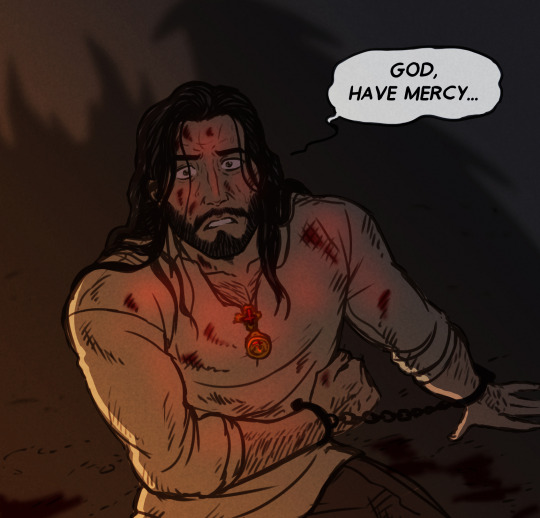
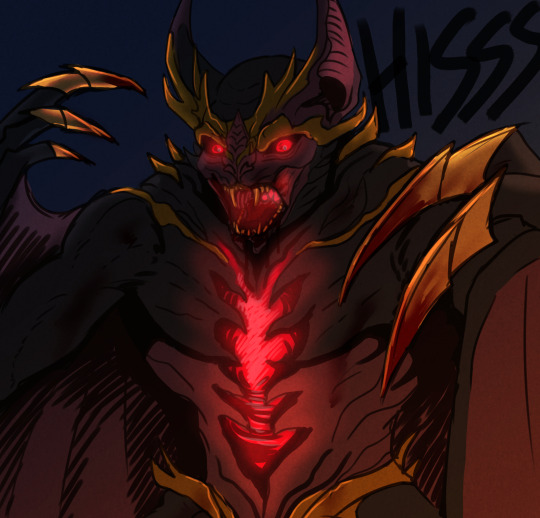
74 notes
·
View notes



